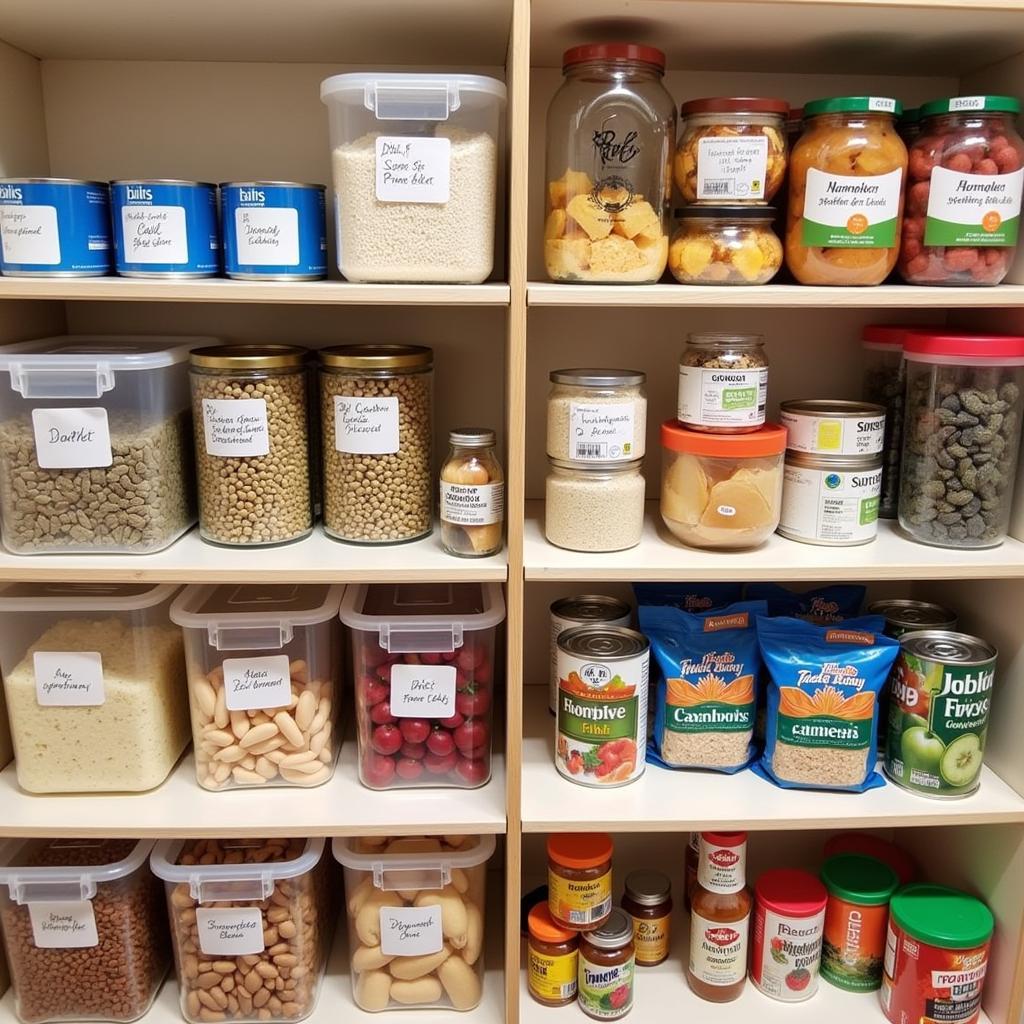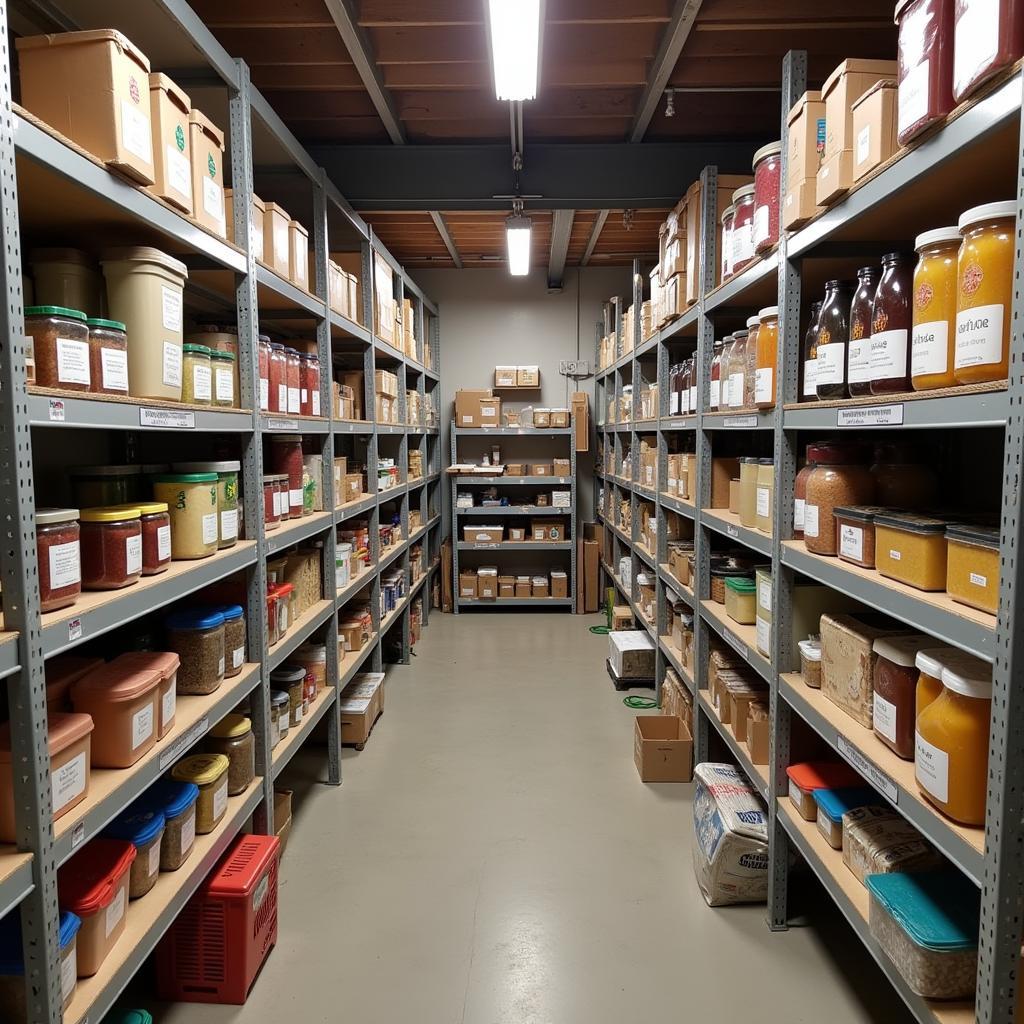Ensuring you have an Emergency Food 1 Year Supply is a crucial step in preparing for unforeseen circumstances. Whether it’s a natural disaster, economic downturn, or personal emergency, having a reliable food stockpile can provide peace of mind and essential sustenance. This guide will delve into the essentials of building a year-long emergency food supply, covering everything from choosing the right foods to proper storage techniques. We’ll explore how to create a balanced and nutritious stockpile that caters to your specific needs and dietary requirements.
Planning Your Emergency Food 1 Year Supply
Creating a sustainable emergency food 1 year supply requires careful planning and consideration. Start by assessing your household’s needs, considering factors like the number of people, dietary restrictions, and caloric requirements. A well-rounded supply should include a variety of food groups to ensure a balanced diet, even in emergency situations. You can explore options like emergency food storage solutions for long-term preservation.
Calculating Caloric Needs
Determine the daily caloric needs of each family member. A general guideline is 2,000 calories per day for adults and adjust accordingly for children and individuals with specific dietary needs. Multiply this daily requirement by 365 to determine the total caloric needs for a year. Remember to account for potential variations in activity levels during an emergency.
Diversifying Your Food Choices
While staples like rice and beans are excellent for long-term storage, incorporating a variety of foods is essential for both nutritional value and morale. Consider adding canned fruits, vegetables, protein sources like canned meats or dehydrated meals, and comfort foods like dried fruit or nuts.
Having suitable containers is also essential. You might consider investing in heavy duty food storage containers to ensure your supplies remain safe and fresh.
 Planning Your Emergency Food Supply for One Year
Planning Your Emergency Food Supply for One Year
Choosing the Right Foods for Long-Term Storage
Selecting foods with a long shelf life is paramount for a year-long emergency food supply. Opt for non-perishable items that can withstand temperature fluctuations and require minimal preparation. Remember to consider nutritional value and ease of storage when making your selections.
Shelf-Stable Staples
Dried goods like rice, beans, pasta, and oats are excellent choices, offering high caloric density and long shelf life. These staples form the foundation of a sustainable food supply. You can find appropriate storage solutions in 25 year food buckets.
Canned Goods
Canned fruits, vegetables, meats, and fish provide essential vitamins and minerals. Choose low-sodium and low-sugar options when possible to maintain a healthy diet. Ensure cans are free from dents or rust to prevent spoilage.
Dehydrated and Freeze-Dried Foods
Dehydrated and freeze-dried foods are lightweight and compact, making them ideal for storage. These options often retain their nutritional value and can be easily rehydrated with water.
 Choosing the Right Foods for Long-Term Storage
Choosing the Right Foods for Long-Term Storage
Storing Your Emergency Food Supply
Proper storage is crucial to maintain the quality and safety of your emergency food supply. A cool, dry, and dark environment is ideal for preventing spoilage and extending shelf life. Regularly inspect your supplies for signs of damage or deterioration.
Protecting Against Pests and Moisture
Store food in airtight containers like 2 gallon food grade bucket with lid to protect against pests and moisture. Consider using oxygen absorbers for long-term storage of dry goods.
Rotating Your Stock
Implement a first-in, first-out rotation system to ensure you are consuming the oldest items first and replenishing your supply regularly. This practice minimizes waste and maintains the freshness of your stockpile.
Food safety is paramount, especially in emergencies. Understanding canes food safety guidelines can ensure your stored food remains safe for consumption.
 Proper Food Storage Techniques for Emergency Preparedness
Proper Food Storage Techniques for Emergency Preparedness
Conclusion
Building an emergency food 1 year supply is an investment in your family’s well-being. By following these guidelines, you can create a comprehensive and sustainable food stockpile that will provide essential sustenance during challenging times.
FAQ
-
How much water should I store per person per day? One gallon per person per day is a general recommendation.
-
What is the best way to store dried beans? Airtight containers in a cool, dry, and dark location are ideal.
-
How often should I rotate my food supply? Every six months to a year is generally recommended.
-
What are the best types of canned goods for long-term storage? Low-sodium and low-sugar options with a long shelf life.
-
Where should I store my emergency food supply? A cool, dry, and dark location away from direct sunlight and temperature fluctuations.
-
What are some good protein sources for an emergency food supply? Canned meats, beans, lentils, and dehydrated or freeze-dried meat options.
-
How can I make my emergency food supply more palatable? Include a variety of foods, spices, and condiments to enhance flavor.
Need more information on building your year-long emergency food supply? Check out our articles on emergency food storage and food safety.
For assistance, contact us at Phone: 02437655121, Email: [email protected], or visit us at 3PGH+8R9, ĐT70A, thôn Trung, Bắc Từ Liêm, Hà Nội, Việt Nam. We have a 24/7 customer service team.